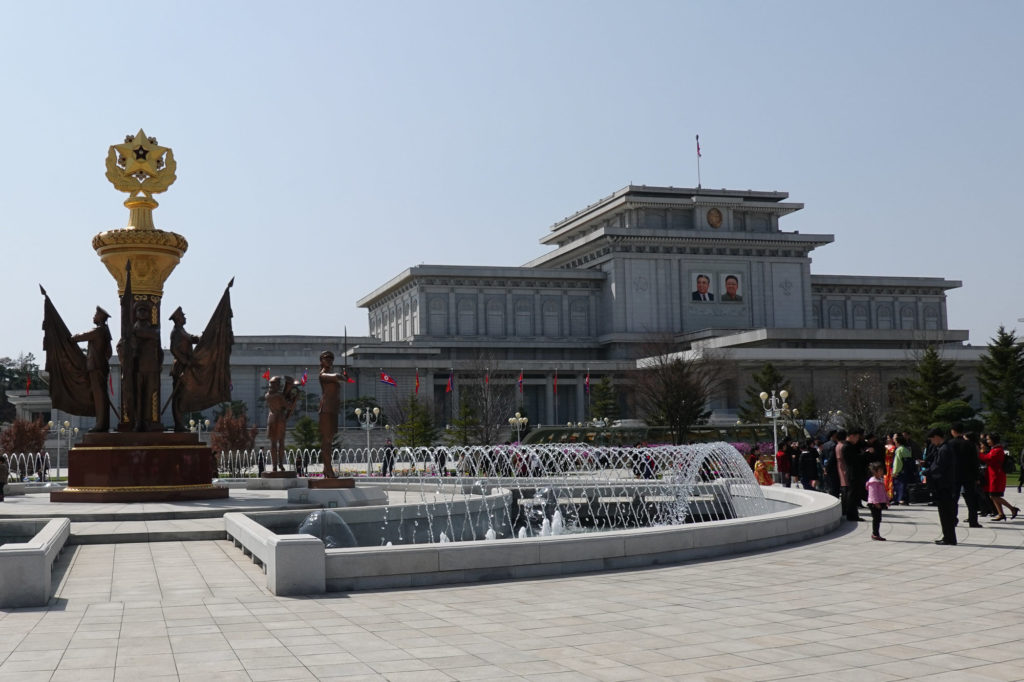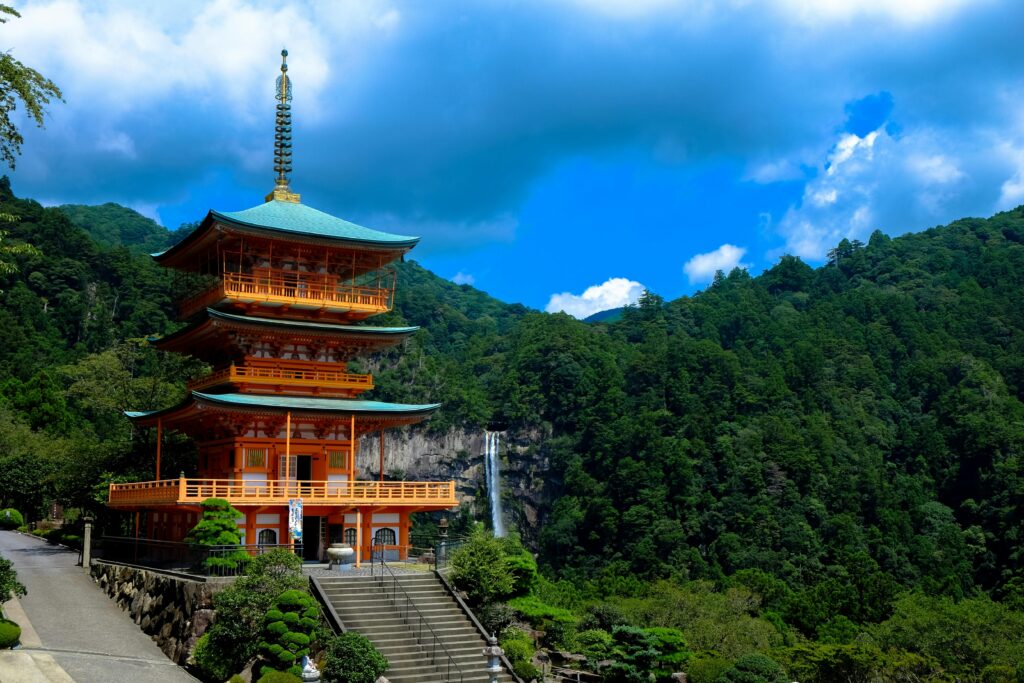|
Getting your Trinity Audio player ready...
|

North Korea, officially known as the Democratic People’s Republic of Korea (DPRK), is one of the most mysterious and countries in the world. Despite its isolation, North Korea offers a range of fascinating tourist destinations that provide a glimpse into its unique culture, history, and political ideology.
Pyongyang, which is the capital of North Korea is the political and cultural heart, featuring grand monuments and impressive buildings. Other notable sites include the Kumsusan Palace of the Sun, the Mansu Hill Grand Monument, and the Demilitarized Zone (DMZ). Natural attractions like Mount Paektu and the Myohyangsan are also popular.
Here are 15 popular tourist destinations in North Korea that attract visitors from all over the world.
Contents at a Glance
15 Popular Tourist Destinations in North Korea
1. Pyongyang

Pyongyang is the capital city of North Korea. It is the political and cultural heart of the country. The city has grand monuments, wide boulevards, and impressive buildings.
You can explore the Pyongyang Metro, one of the deepest metro systems in the world. The metro system in Pyongyang has two lines. The Chollima line is named after a fast horse from ancient Korean mythology and is about 12 km long. The Hyŏksin line, which means renewal, is about 10 km long.
Another notable site is the Arch of Triumph, which honors Korean resistance to Japanese rule.
2. Kumsusan Palace of the Sun

The Kumsusan Palace of the Sun is the mausoleum where the bodies of Kim Il-sung and Kim Jong-il lie in state. This grand structure is very important in North Korea and is meticulously maintained.
Whenever you visit, you must follow some rules and regulations. Some of these rules include dressing formally and showing respect at all times.
The palace is a significant site, reflecting the reverence North Koreans have for their leaders. It stands as a symbol of the country’s leadership and history.
3. Mansu Hill Grand Monument

The Mansu Hill Grand Monument features large statues of Kim Il-sung and Kim Jong-il. These statues are surrounded by sculptures that show different scenes from Korean history.
Locals often visit this site to pay their respects and lay flowers. One requirement for tourists to observe here is that they have to bow and show reverence when visiting this monument. The monument is an important site in North Korea, reflecting the country’s history and leadership.
The statues and sculptures create a powerful image of North Korea’s past and present.
4. Demilitarized Zone (DMZ)

The DMZ is a strip of land that runs across the Korean Peninsula. It acts as a cushioning zone between North and South Korea. This area is one of the most heavily guarded and militarized borders in the world.
The DMZ offers a clear view of the ongoing tensions on the Korean Peninsula. The area is filled with barbed wire, watchtowers, and soldiers from both sides.
Guided tours often include visits to observation points, where you can see across the border. This site is a powerful reminder of the division and hope for reunification.
5. Mount Paektu

Mount Paektu is the highest mountain in Korea and holds great cultural importance. It is linked to Korean mythology and is believed to be the birthplace of Dangun, the founder of the first Korean kingdom.
The mountain features a stunning crater lake known as Heaven Lake. Its remote location and natural beauty make it a favorite spot for adventurous travelers.
You can hike up the mountain and enjoy the breathtaking views from the summit. There are also several hot springs in the areas, which many believe to have healing properties.
You may also like: Places To Visit During A 3 Day Vacation in Seoul
6. Kaesong

Kaesong is an ancient city near the South Korean border. It was once the capital of the Koryo Dynasty and is filled with historical sites. Key attractions include the Kaesong Koryo Museum, which is housed in a former Confucian academy, and the Tomb of King Kongmin.
The city offers a unique blend of history and traditional Korean culture. Visiting Kaesong provides a deep dive into Korea’s rich historical past.
The city is also famous for its beautiful traditional Korean houses, called hanoks. However, many of these houses are now guesthouses, where you can experience traditional Korean living.
7. Myohyangsan

Myohyangsan, also known as the Myohyang Mountains, is famous for its beautiful landscapes and cultural sites. The area hosts the International Friendship Exhibition, which displays gifts given to North Korean leaders by foreign dignitaries.
You can also explore the ancient Pohyon Temple, dating back to the Goryeo Dynasty. The scenic beauty and cultural significance make Myohyangsan a popular tourist spot.
The area is also home to several waterfalls and streams. The clear, fresh air and serene environment make it a perfect place for relaxation and meditation.
8. Wonsan

Wonsan is a port city on North Korea’s east coast. It is famous for its lovely beaches and coastal views. The city is being developed into a major tourist hub with plans for luxury resorts and recreational facilities.
Wonsan offers a mix of relaxation and adventure by the sea. The city has a long pier that extends into the sea, where you can enjoy a leisurely stroll and take in the sea breeze. There are also several seafood restaurants in the area, serving fresh fish and other local delicacies.
9. Hamhung
Hamhung is North Korea’s second-largest city and a significant industrial center. It has several historical sites, including the Tonghung Revolutionary Site and the Hamhung Grand Theatre. The ancient tombs in the Dongbong and Sangbong Mountains, dating back to the Koguryo Kingdom is also a good place to visit.
The city is known for its chemical industry and has several large factories. Despite its industrial nature, Hamhung has many parks and green spaces where you can relax and enjoy the outdoors.
10. Sinuiju

Sinuiju is a border city located on the Yalu River, opposite the Chinese city of Dandong. It serves as a key gateway for trade between North Korea and China.
The city has several tourist attractions. Some include the Sinuiju Cosmetics Factory and the Yalu River Broken Bridge, which was partially destroyed during the Korean War.
The city has a lively market where you can buy local goods and souvenirs. There are also several parks and recreational areas along the river, where you can enjoy the scenic views and fresh air.
11. Nampo

Nampo is a port city on North Korea’s west coast. It is popular for its scenic views and the West Sea Barrage, a massive dam and lock system that controls water levels and prevents flooding. You can tour the barrage and learn about its construction and importance to the region.
Nampo showcases North Korea’s engineering achievements and natural beauty. The city has a crowded harbor where ships from around the world dock. There are also several seafood restaurants in the area, serving fresh fish and other local delicacies.
12. Kumgangsan

Kumgangsan, also known as Mount Kumgang, is famous for its stunning natural beauty. The area features rocky peaks, lush forests, and clear streams. It is a popular destination for hiking and outdoor activities. The mountain has inspired Korean artists and poets for centuries.
The area has several well-maintained hiking trails, suitable for all levels of hikers. There are also several temples and shrines in the area, where you can learn about the region’s spiritual heritage. The mountain is especially beautiful in autumn, when the leaves turn vibrant shades of red and gold.
You may also like: Interesting Facts About the Forbidden City in China
13. Chilbosan

Chilbosan, or Mount Chilbo, is a beautiful mountain range in North Korea. It is famous for its unique rock formations and scenic landscapes. The area is less developed for tourism, making it ideal for those seeking off-the-beaten-path experiences.
Chilbosan is perfect for nature lovers and adventurers. The mountain has several hiking trails that offer breathtaking views of the surrounding landscape.
14. Rason

Rason is a special economic zone in northeastern North Korea. It is open to foreign investment and trade, making it a unique area within the country. The city has several attractions, including the Rajin Port, the Golden Triangle Bank, and the Rason Business Hotel.
Rason provides a different perspective on North Korean development. The city has a bustling market where you can buy local goods and souvenirs. There are also several parks and recreational areas in the city, where you can relax and enjoy the outdoors.
15. Chongjin

Chongjin is a major industrial city in North Korea. It is famous for its steel production and heavy industry. Despite its industrial nature, the city offers several tourist attractions, such as the Chongjin Revolutionary Museum and the beautiful beaches along the East Sea.
Chongjin provides insight into the daily lives of North Korean workers and the country’s industrial capabilities. The city has a lively market where you can buy local goods and souvenirs. There are also several parks and recreational areas in the city, where you can relax and enjoy the outdoors.
Frequently Asked Questions
1. Is it safe to travel to North Korea?
Traveling to North Korea can be safe if you follow the rules and guidelines set by the local authorities and your tour guides. Independent travel is not acceptable; you must book a tour through an approved travel agency.
2. What should I expect regarding communication in North Korea?
Communication in North Korea is limited. Internet access is not available to tourists, and international phone calls are restricted. Your tour guide will handle most communications on your behalf.
3. What is North Korea’s currency, and how can I pay for things?
The official currency in NK is the North Korean Won (KPW). However, tourists can use Euros, Chinese Yuan, or US Dollars for purchases. Credit cards have a limited acceptability. So, it is best to carry cash.
4. Are there any specific rules or etiquette I should follow while in North Korea?
Yes, North Korea has strict rules and etiquette that visitors must follow. Showing respect to the leaders, not taking unauthorized photos, and always staying with your guide are very important. Breaking these rules can result in severe consequences.
Conclusion – 15 Tourist Hubs in North Korea
Indeed, North Korea offers a wide range of tourist destinations that highlight its unique history, culture, and landscapes. The grand monuments of Pyongyang and the serene beauty of Mount Paektu each tell a part of North Korea’s story.
You can explore historic sites, enjoy natural beauty, and learn about the country’s political heritage.
Traveling to North Korea requires careful planning and adherence to strict regulations, but the experience can be rewarding and educational. These destinations provide insight into a country that is often misunderstood and rarely seen by outsiders.
History buffs and adventure seekers will find something special in North Korea. Discovering these places can be a truly memorable and enriching experience.









